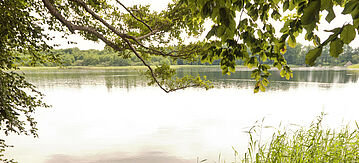The 15 UNESCO German biosphere reserves between Southeast Rügen and Schwäbische Alb are important factors for regional economic development. The protected areas attract around 65 million tourists annually which equates to a gross turnover of almost three billion euro and provides income for more than 86,000 people in these regions. These figures are taken from a recently published study carried out by the University of Wurzburg on behalf of the Federal Environment Ministry and the Federal Agency for Nature Conservation.
Federal Environment Minister Barbara Hendricks commented: "Biosphere reserves can boost tourism in rural areas. This is not only good news for biodiversity, but also for the local economies of these regions."
President of the Federal Agency for Nature Conservation, Ms Beate Jessel added: "Data on the economic value of nature tourism in biosphere reserves and other protected areas is an important basis for further exploiting the potential of biosphere reserves. This data also serves to increase the acceptance of such protected areas."
The study describes visitor profiles, spending habits and reasons for visiting German biosphere reserves. The evaluations prove that previously lesser known destinations have profited from their biosphere reserve status. At the same time however, there is considerable potential for developing nature tourism offers specifically tailored to protected areas.

